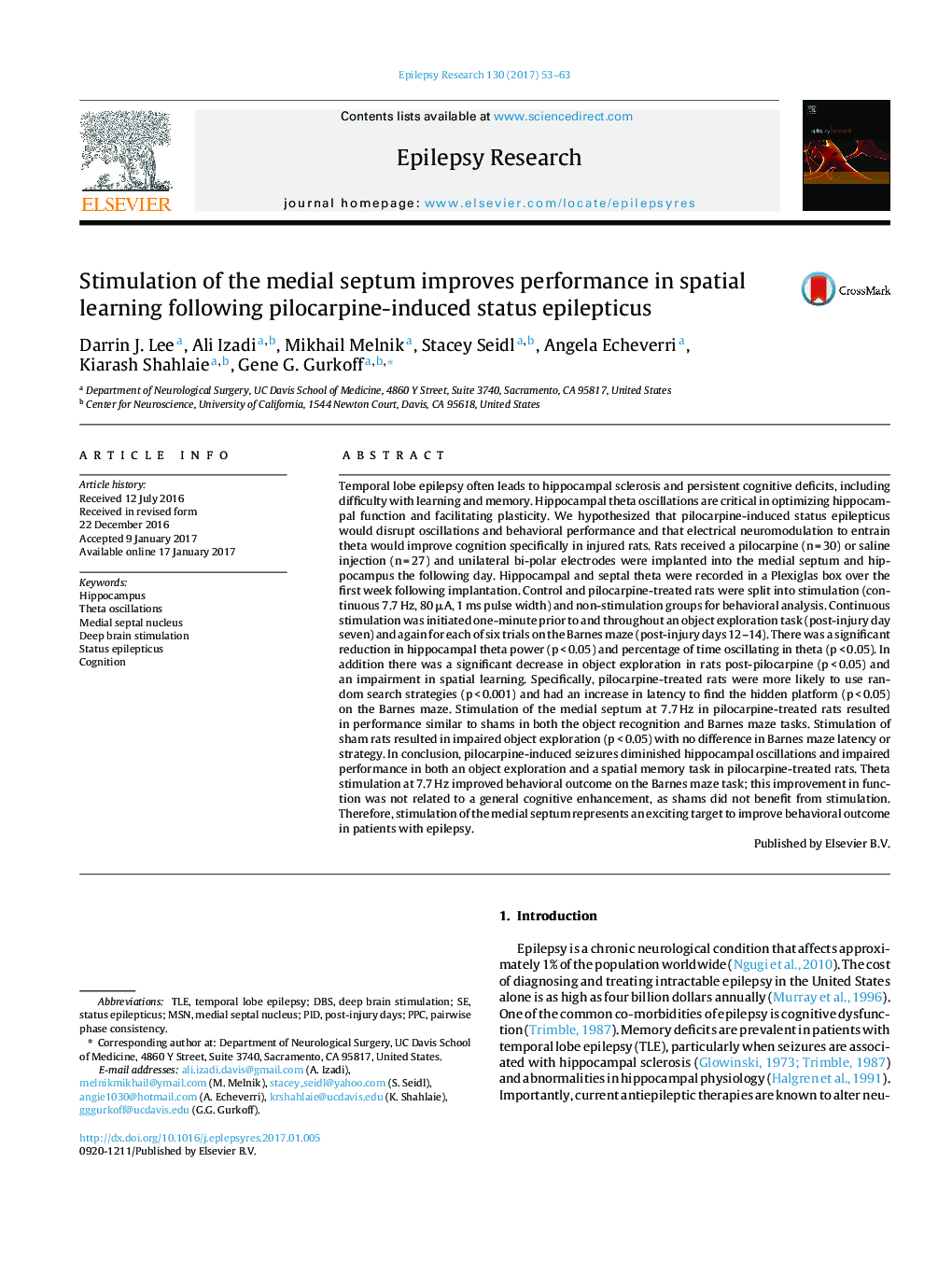| کد مقاله | کد نشریه | سال انتشار | مقاله انگلیسی | نسخه تمام متن |
|---|---|---|---|---|
| 5628753 | 1579893 | 2017 | 11 صفحه PDF | دانلود رایگان |

- Hippocampal theta oscillations are altered in the first week post-status epilepticus.
- Following seizures rats are impaired in exploration and spatial learning tasks.
- Theta stimulation of the medial septum improves behavioral outcome post-status.
- Stimulation does not enhance outcome in sham controls.
Temporal lobe epilepsy often leads to hippocampal sclerosis and persistent cognitive deficits, including difficulty with learning and memory. Hippocampal theta oscillations are critical in optimizing hippocampal function and facilitating plasticity. We hypothesized that pilocarpine-induced status epilepticus would disrupt oscillations and behavioral performance and that electrical neuromodulation to entrain theta would improve cognition specifically in injured rats. Rats received a pilocarpine (n = 30) or saline injection (n = 27) and unilateral bi-polar electrodes were implanted into the medial septum and hippocampus the following day. Hippocampal and septal theta were recorded in a Plexiglas box over the first week following implantation. Control and pilocarpine-treated rats were split into stimulation (continuous 7.7 Hz, 80 μA, 1 ms pulse width) and non-stimulation groups for behavioral analysis. Continuous stimulation was initiated one-minute prior to and throughout an object exploration task (post-injury day seven) and again for each of six trials on the Barnes maze (post-injury days 12-14). There was a significant reduction in hippocampal theta power (p < 0.05) and percentage of time oscillating in theta (p < 0.05). In addition there was a significant decrease in object exploration in rats post-pilocarpine (p < 0.05) and an impairment in spatial learning. Specifically, pilocarpine-treated rats were more likely to use random search strategies (p < 0.001) and had an increase in latency to find the hidden platform (p < 0.05) on the Barnes maze. Stimulation of the medial septum at 7.7 Hz in pilocarpine-treated rats resulted in performance similar to shams in both the object recognition and Barnes maze tasks. Stimulation of sham rats resulted in impaired object exploration (p < 0.05) with no difference in Barnes maze latency or strategy. In conclusion, pilocarpine-induced seizures diminished hippocampal oscillations and impaired performance in both an object exploration and a spatial memory task in pilocarpine-treated rats. Theta stimulation at 7.7 Hz improved behavioral outcome on the Barnes maze task; this improvement in function was not related to a general cognitive enhancement, as shams did not benefit from stimulation. Therefore, stimulation of the medial septum represents an exciting target to improve behavioral outcome in patients with epilepsy.
Journal: Epilepsy Research - Volume 130, February 2017, Pages 53-63